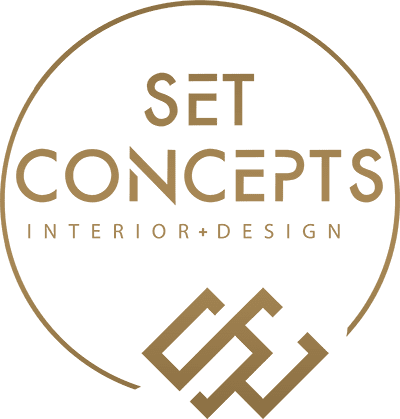The Role of Texture In Interior Design
When it comes to interior design, texture is an often overlooked but crucial element. Texture can add depth, dimension, and personality to a space, transforming it from a flat and uninteresting room to a dynamic and engaging environment. Whether it’s the rough texture of a stone fireplace, the smooth sheen of a polished hardwood floor, or the softness of a plush area rug, textures can create a sense of richness and warmth. In this article, we will examine the importance of texture in interior design and offer tips on incorporating it into your home. Whether you want to create a cozy and inviting space or add some visual interest to a sleek and modern room, understanding the role of texture can help you achieve your desired aesthetic.
 What is Texture?
What is Texture?
Texture in interior design refers to the quality of a surface of a material or object. It is a surface’s tactile and visual feel and how it affects a space’s overall look and feel. Texture can be created through various elements, such as fabrics, wall coverings, flooring, and furniture finishes.
Texture differs from other design elements, such as color and pattern, because it is not based on a specific visual element. While color refers to the hue of a surface and pattern refers to the repetition of a visual element, texture refers to the surface quality of a material. Texture is not limited to a particular color or pattern and can be felt and seen differently depending on the angle, lighting, and surrounding elements.
Texture is also different from shape, which refers to the physical form of an object, and size, which refers to the scale of an object in relation to other elements in the room. So, while texture can be affected by the shape and size of an object, it is not the same as these elements.
Overall, texture is a crucial element in interior design because it adds depth and dimension to a space and can create a sense of visual and tactile interest. Texture can be used to create contrast, add warmth and coziness, or create a sense of sophistication and elegance. By incorporating different textures in a space, designers can create a dynamic and visually interesting environment that is both inviting and engaging.
The Different Types of Texture
Texture refers to the object’s surface quality, such as its roughness or smoothness, that can be seen and felt. In interior design, texture creates visual interest and adds depth and dimension to a space. Below are a few of the different types of texture commonly used in interior design:
1. Visual Texture: Visual texture refers to how a surface looks, not how it feels. It can be created through patterns, prints, and color variations. For example, patterned wallpaper or a striped rug can create visual texture.
2. Tactile Texture: Tactile texture refers to the way a surface feels when touched. It can be rough or smooth, soft or hard, and can be created through materials such as fabric, wood, or metal. For example, a plush velvet sofa or a rough brick wall can create tactile texture.
3. Rough Texture: Rough texture refers to surfaces that have a coarse or uneven feel. It can be created through materials such as stone, brick, or rough wood. Rough texture can add an organic and natural feel to a space.
4. Smooth Texture: Smooth texture refers to surfaces that are flat and even. It can be created through glass, metal, or polished stone. Smooth texture can create a modern and sleek look in a space.
5. Shiny Texture: Shiny texture refers to surfaces with a glossy or reflective finish. It can be created through glass, metal, or polished stone. Shiny texture can add a sense of luxury and glamour to a space.
6. Matte Texture: Matte texture refers to surfaces that have a flat and non-reflective finish. It can be created through materials such as matte paint or unfinished wood. Matte texture can create a cozy and casual feel in a space.
By using different types of textures in interior design, designers can create a visually interesting and dynamic space that appeals to the senses.
The Role Texture Plays In Interior Design.
Texture is an essential interior design element that can add depth, dimension, and interest to a space. Here are some benefits of using texture in interior design:
● Adds visual interest: Texture can create visual interest and break up a monotonous space. It adds depth and dimension to a room, making it more visually appealing.
● Creates a cozy atmosphere: Soft textures, such as plush rugs or fluffy pillows, can create a warm and cozy atmosphere in a space, making it feel more inviting.
● Enhances tactile experience: Textured materials such as wood, stone, or woven fabrics add a tactile experience to a space, making it more engaging and exciting to touch.
● Balances design elements: Texture can help balance design elements, creating harmony in a space. For example, a smooth, sleek surface can balance out a rough, textured one.
How To Add Texture To Your Home
● Layer fabrics: Mix and match fabrics with different textures, such as a plush velvet throw blanket, a chunky knit rug, or a linen sofa.
● Mix materials: Incorporate materials with different textures, such as wood, stone, metal, or glass, to create contrast and interest.
● Use textured wallpaper: Wallpaper with a textured finish, such as grasscloth or embossed designs, can add visual interest to a space.
● Add natural elements: Incorporate natural elements, such as plants or woven baskets, to add texture and warmth to a space.
● Play with lighting: Different types of lighting can create texture and shadows, adding interest to a space. For example, a pendant light with a textured shade can create unique patterns of light and shadow.
By incorporating texture into your home, you can create a visually exciting and engaging space that is both cozy and stylish.
The Takeaway
In conclusion, texture is a fundamental aspect of interior design that can transform a space from ordinary to extraordinary. By adding texture to a room through different materials, fabrics, and finishes, designers can create a visually engaging and dynamic space that appeals to the senses. In addition, texture can add depth, dimension, and interest to a room and create a cozy and inviting atmosphere. Whether through visual or tactile texture, rough or smooth surfaces, or natural or man-made materials, using texture in interior design is essential for creating a harmonious and visually pleasing space. Ultimately, texture is a powerful tool that can help designers to create unique and memorable interiors that reflect the personality and style of their clients.






James Burke
Alienum phaedrum torquatos nec eu, vis detraxit periculis in mei.
Mei an pericula euripidis, hinc partem ei est.
Harry Baker
Alienum phaedrum torquatos nec eu, vis detraxit periculis in mei.
Mei an pericula euripidis, hinc partem ei est.
JAMES BURKE
Alienum phaedrum torquatos nec eu, vis detraxit periculis in mei.
Mei an pericula euripidis, hinc partem ei est.